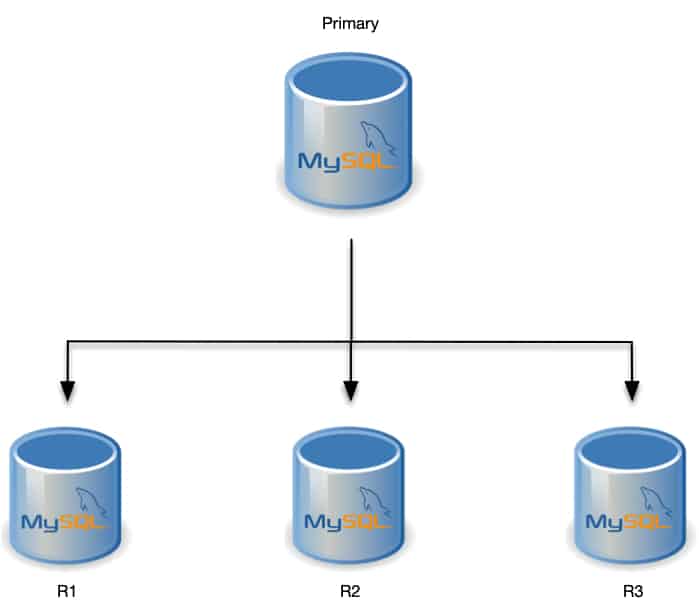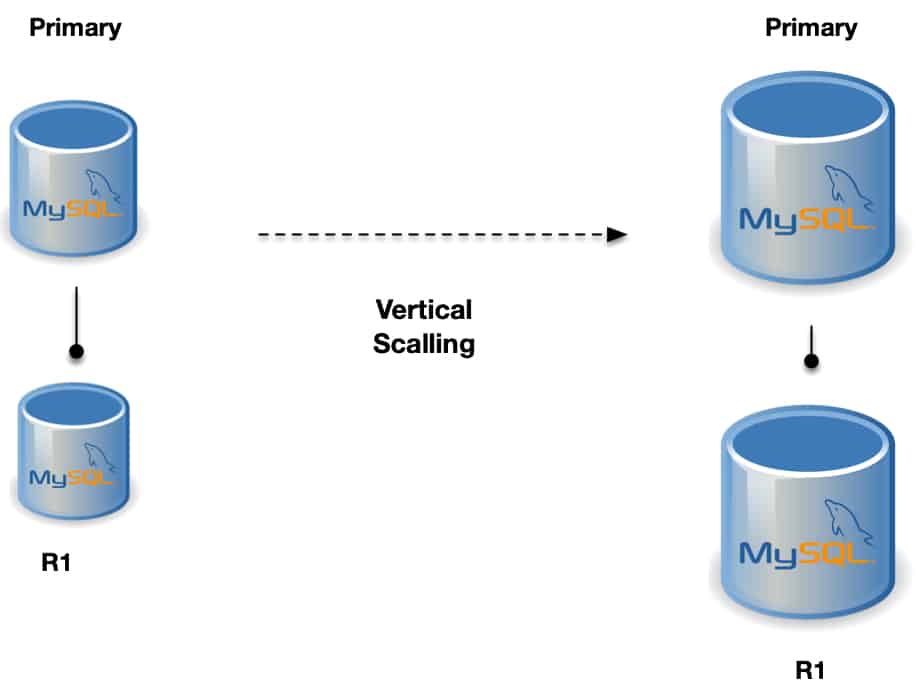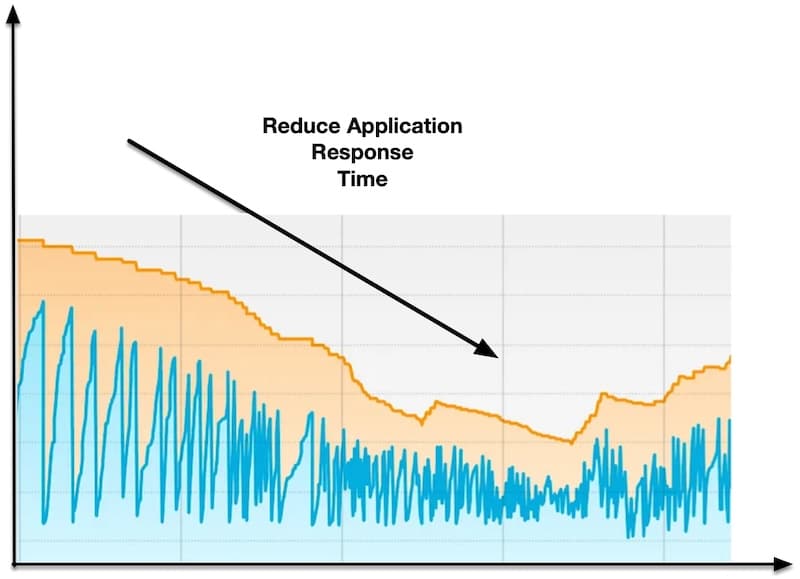Scaling MySQL databases can be daunting, but it becomes manageable with the right strategies. This blog post explores challenges faced when scaling and provides techniques for efficient scaling. Discover how to scale Mysql for maximum performance.
Scaling MySQL Key Takeaways
- Understand challenges associated with scaling MySQL databases to employ horizontal and vertical scaling and application-level optimizations effectively.
- Leverage tools like sharding, partitioning, and read replicas to improve performance & scalability.
- Implement infrastructure changes, including replica databases & microservices architecture, to scale MySQL efficiently.
Understanding MySQL Scaling Challenges

Scaling MySQL and other databases presents unique challenges, such as performance bottlenecks, increased costs, and management complexities. As data storage and processing demand grows, database administrators must find ways to scale MySQL effectively, ensuring it remains responsive and reliable.It becomes even more challenging when you want to use MySQL for analytics.
Once administrators grasp the challenges of scaling MySQL, they can tackle them with strategies like horizontal scaling, vertical scaling, and application-level optimizations to enhance database performance.
Mysql Horizontal Scaling Strategies

Horizontal scaling involves spreading data and workload across multiple servers, which can significantly improve MySQL performance. This can be achieved through sharding, partitioning, and read replicas. By distributing data across multiple MySQL servers, these techniques can help alleviate slow queries and ensure that the database remains responsive and reliable.
We will now examine these strategies more thoroughly.
Sharding
Sharding is dividing a large table into smaller tables based on specific criteria, such as geographic location or customer type. This technique helps distribute data across multiple MySQL servers and can significantly boost performance, especially when dealing with large tables containing millions of rows. However, sharding requires careful planning and can be complex to implement, mainly when working with the MySQL primary database.
Efficiently managing complexity is achievable by positioning an intermediary between the application logic and the database, ensuring proper indexes are used. For instance, imagine an e-commerce platform with millions of customers from different countries. When customer data is shared based on geographic location, the platform can limit each shard to a manageable data amount, which speeds up query execution and minimizes storage resources.
This strategy enhances MySQL’s performance and contributes to efficient database scaling as the platform expands.
Partitioning
Partitioning is another effective horizontal scaling strategy involving dividing a large table in the same database into smaller, more manageable pieces. This process is based on a particular column or columns, helping improve query performance and reducing the amount of data that needs to be stored in memory. Selecting the appropriate columns for partitioning is crucial, as it directly impacts the performance of the database. Regular maintenance of partitions is also essential to ensure that the data remains up-to-date and the partitions are correctly sized.
For example, an online news platform might partition its articles and create a table based on the publication date. This would allow the platform to retrieve articles from a specific period efficiently without scanning the table. Partitioning the table this way enables the platform to boost query performance and ensure efficient database scaling as the article count increases.
Read Replicas
Read replicas are copies of the master MySQL database that can offload read operations, improving scalability and availability. Channeling read queries to the read replicas reduces the load on the primary database, which enhances performance and decreases read-write-locking problems.
However, setting up and maintaining read replicas can be challenging, and they can introduce latency issues due to the need to keep the replicas synchronized with the primary instance.
Consider a social media platform with millions of users constantly posting and viewing content. The platform can delegate read queries to the replicas by using read replicas, enabling the primary database to concentrate on write operations. This improves the overall performance of transactions on the platform and ensures that the database scales effectively to accommodate the growing number of users and their activities.
Mysql Vertical Scaling Approaches

While horizontal scaling distributes data and workload across multiple servers, vertical scaling focuses on upgrading the resources of a single server, such as hardware, memory, and disk space. Vertical scaling can be a viable option for improving MySQL performance when horizontal scaling is not applicable or sufficient.
We will now delve into these vertical scaling approaches more comprehensively.
Upgrading Server Hardware
Upgrading server hardware is a straightforward vertical scaling approach that involves moving to a more powerful machine to increase memory, CPU, and I/O capacity. For instance, a database running on commodity hardware might struggle to handle the increasing workload as the number of users grows. Upgrading the server hardware allows the database to meet increased demand while maintaining responsiveness and reliability.
However, planning the upgrade process carefully and considering factors such as downtime and data migration is essential to ensure a smooth transition to the new hardware.
Choose the right database engine
Selecting the right database engine is crucial for optimal performance. The choice of engine can greatly impact your MySQL database’s scalability, speed, and reliability. It is essential to carefully evaluate and compare different database engines based on workload requirements, data storage, query complexity, and compatibility with your application. By selecting the appropriate database engine, you can optimize your MySQL database for maximum performance.
Increasing Memory
Increasing memory can significantly impact MySQL performance by allowing more data to be cached and reducing disk I/O. This can be achieved by installing additional RAM on the server, using a storage engine optimized for memory, or implementing a caching layer such as Redis or Memcached.
Allocating more memory to the database optimizes query response times, leading to a more efficient and responsive database system.
Optimizing Disk Space Usage
Optimizing index and disk space usage is another vertical scaling approach that can help improve MySQL performance and scalability. This can be achieved by selecting appropriate data types, using ENUM for categorical data, and removing unused indexes.
Optimizing the data storage on the disk, considering disk size, enhances database operation efficiency, minimizes resources needed for data storage, indexing, and retrieval, and ensures effective database scaling as data volume increases.
Application-Level Optimizations

In addition to the scaling strategies already discussed, application-level optimizations can also be employed to improve MySQL performance further. Techniques such as caching, query optimization, and utilizing search engines can help enhance the efficiency of the database and its DB engine. Managing MySQL, connections effectively is another way to optimize performance.
We will now probe further into these application-level optimizations.
Caching Techniques
Caching is a powerful technique that can significantly improve MySQL performance by storing frequently accessed data in memory and reducing the number of queries sent to the database. Tools like Redis and Memcached can cache query results, allowing the database to retrieve data more quickly and efficiently.
Implementing caching techniques allows the database to concentrate on more crucial tasks, enhancing performance and scalability.
Query Optimization
Query optimization involves selecting only required columns, breaking up complex queries into simpler ones, and prefetching records to prevent n+1 queries. Efficient database operation, leading to improved performance and scalability, comes from analyzing query performance and implementing necessary changes to optimize queries.
Additionally, monitoring tools like MySQL Enterprise Monitor and MySQL Query Analyzer can be employed to identify slow queries and provide insights on optimizing them.
Utilizing Search Engines
Utilizing search engines like full-text search or Elasticsearch can offload complex or text-heavy queries from the database, improving performance. Channeling these resource-intensive queries to the search engine allows the database to concentrate on more vital tasks, leading to better performance and scalability.
Search engines can also provide additional benefits, such as enhanced query performance, scalability, and adaptability, making them an invaluable tool for optimizing MySQL databases.
Monitoring and Identifying Slow Queries
Monitoring and identifying slow queries in MySQL is crucial for pinpointing performance bottlenecks and optimizing database performance. By utilizing tools like the Slow Query Log and other monitoring tools, administrators can gain insights into the performance of their queries and make the necessary adjustments to improve database performance.
We will now discuss the significance of monitoring and identifying these queries and their role in optimizing MySQL performance.
Infrastructure Changes for Scaling MySQL
Infrastructure changes, such as replica databases, functional partitioning, and microservices, can be vital in scaling MySQL databases and implementing a MySQL cluster. These changes can help improve the database system’s performance, scalability, and reliability by distributing data and workload across servers and services, including MySQL clusters.
Replica Databases
Replica databases can handle read queries and serve as backups, improving performance and redundancy. Delegating read queries to the replica databases allows the primary database to concentrate on write operations, improving performance and reducing read-write-locking issues.
Additionally, replica databases can serve as backups, providing redundancy in the event of a primary database failure. By utilizing Mysql replica databases, administrators can effectively scale their MySQL databases and ensure they remain responsive and reliable.
Functional Partitioning
Functional partitioning involves dividing a web application into separate databases based on specific functions or user types. This technique helps reduce complexity and improve scalability by allowing the database to focus on specific tasks, ensuring it remains responsive and reliable.
For example, an e-commerce platform might partition its databases based on customer type, allowing for increased scalability and performance as the number of users grows. Administrators can scale their MySQL databases effectively by adopting functional partitioning, ensuring responsiveness and reliability.
Microservices
Microservices architecture can help scale MySQL by:
- Breaking down a monolithic application into smaller, independent services
- Allowing communication between services through APIs
- Increasing scalability and performance by scaling each service independently based on specific requirements.
Additionally, microservices can help optimize resource utilization and enable faster development cycles, making them an invaluable tool for scaling MySQL databases. Administrators can scale their MySQL databases effectively and maintain responsiveness and reliability through microservices architecture.
Achieving maximum MySQL performance is an ongoing effort that requires continuous vigilance and a deep understanding of your database’s health, as outlined in our essential guide to database auditing.
Need Help Scaling MySQL?
Don’t hesitate to visit our database services page or contact us for more information.
Summary
Scaling MySQL databases can be challenging but can be accomplished effectively with the right strategies and techniques.
It’s important to note that the Mysql engine (InnoDB) was designed for transactions (OLTP) and not built for analytical queries (OLAP), and column–oriented engines are more appropriate for analytics.
Administrators can ensure that their databases remain responsive and reliable as data storage and processing demand grows by employing horizontal and vertical scaling approaches, application-level optimizations, and infrastructure changes. Don’t let your MySQL database’s performance suffer – embrace these scaling strategies and unlock your database’s full potential.
How to make MySQL database scalable?
Scaling MySQL is achievable through horizontal and vertical scaling, adding or upgrading more database servers.
Additionally, it’s possible to scale the environment elastically by implementing a failover system and scaling up existing replicas for further support.
Is MySQL easy to scale?
MySQL is easily scalable due to the capability of changing standalone DB system shapes, allowing users to scale up or down based on workload needs.
This ability makes it an ideal choice for businesses that need to scale their databases quickly and efficiently.
Why are column-oriented engines more appropriate for analytics?
Column-oriented (or columnar) databases store data in columns rather than rows, and this orientation offers several advantages regarding analytics.
Compression: Columnar storage improves data compression by using the same data type for each column, making compression algorithms more effective. This reduces storage costs and speeds up query execution by minimizing the bottleneck of reading from disk.
IO Efficiency: Analytical queries often require only a subset of columns. Columnar storage reads only the necessary columns, reducing I/O operations. In contrast, row-oriented databases read entire rows even for a few columns.
Vectorized Query Execution: Modern columnar databases can execute queries using vectorization. This allows operations to be performed on entire columns or significant chunks of a column simultaneously, utilizing modern CPU architectures and SIMD (Single Instruction, Multiple Data) instructions more effectively.
Better CPU Cache Utilization: Columnar data access improves CPU cache line utilization and performance by fetching adjacent data that is typically relevant to the current query due to spatial locality.
Aggregation Performance: By utilizing a columnar data format, you can significantly accelerate your analytical queries that require aggregations such as SUM, AVG, and COUNT. The sequential operation of these aggregations on columnar data format results in faster query performance – allowing you to analyze and derive insights from your data more efficiently.
What are the main challenges faced when scaling MySQL databases?
Scaling MySQL databases presents several challenges, including performance issues, rising costs, and increased complexity in management.
These challenges can be addressed using a managed database service like Amazon RDS or Google Cloud SQL. These services provide a cost-effective and reliable solution for scaling MySQL databases. They also offer other services.
What is the difference between horizontal and vertical scaling in MySQL?
Horizontal scaling involves distributing data and workload across multiple servers, while vertical scaling focuses on upgrading the resources of all nodes on a single server.
This is the main difference between horizontal and vertical scaling in MySQL.
What is Singlestore, and how can it be used to scale MySQL databases?
SingleStore (formerly known as MemSQL) is a distributed, relational database management system that aims to deliver high performance, scalable SQL-based solutions. It’s designed to handle transactional (OLTP) and analytical (OLAP) workloads in a unified system.







